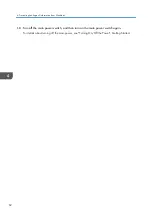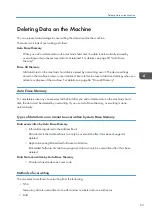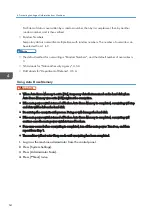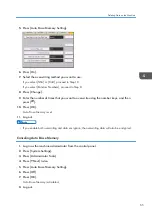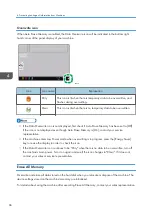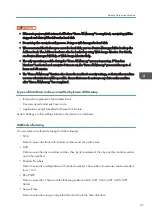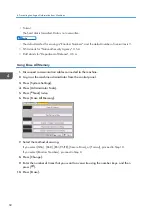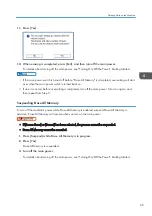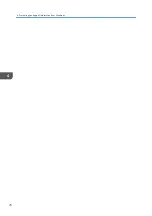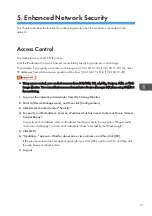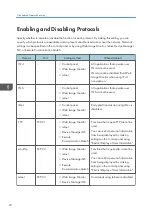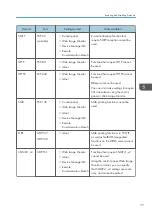
Deleting Data on the Machine
You can prevent data leakage by overwriting the data stored on the machine.
There are two kinds of overwriting as follows:
Auto Erase Memory
When you edit or delete data on the machine's hard disk, the data is automatically erased by
overwriting so that unnecessary data is not retained. For details, see page 63 "Auto Erase
Memory".
Erase All Memory
All data stored on the machine's hard disk is erased by overwriting over it. The device settings
stored on the machine's memory are initialized. Execute this to erase all data and settings when you
relocate or dispose of the machine. For details, see page 66 "Erase All Memory".
Auto Erase Memory
To completely erase any unnecessary left behind after you edit or delete data on the machine's hard
disk, the data must be deleted by overwriting. If you use Auto Erase Memory, overwriting is done
automatically.
Types of data that can or cannot be overwritten by Auto Erase Memory
Data overwritten by Auto Erase Memory
• Information registered in the Address Book
Data stored in the Address Book can only be overwritten after it has been changed or
deleted.
• Applications using Embedded Software Architecture
Embedded Software Architecture programs' data can only be overwritten after it has been
deleted.
Data Not overwritten by Auto Erase Memory
• Counters stored under each user code
Methods of overwriting
You can select a method of overwriting from the following:
• NSA
Temporary data is overwritten twice with random numbers and once with zeros.
• DoD
Deleting Data on the Machine
63
Summary of Contents for PRO C9100
Page 2: ......
Page 8: ...List of Operation Privileges for Address Books 229 INDEX 231 6...
Page 24: ...1 Getting Started 22...
Page 72: ...4 Preventing Leakage of Information from Machines 70...
Page 116: ...5 Enhanced Network Security 114...
Page 176: ...6 Managing the Machine 174...
Page 188: ...7 Troubleshooting 186...
Page 235: ......
Page 236: ...EN GB EN US EN AU M238 1022 2014...














